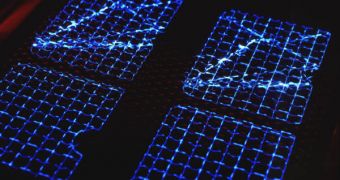In laser sciences, the photoelectric effect is a phenomenon that explains why stimulated light can rip electrons from their orbits around atomic nuclei and carry them away. But this theorem is about to be rewritten, some physicists say. In recent tests, they have noticed that, when using very powerful UV lasers, not only outer electrons were ripped from atoms, but also some in the inner regions. This means, the experts add, that we may need to reconsider our assessment of when light is a wave and when it's a particle (photon).
“The photoelectric effect was the most famous effect to demonstrate that light can have particle character. Now we come and say, even the photoelectric effect is better described in the wave picture of light if you apply these high intensities,” Berlin, Germany-based Physikalisch-Technische Bundesansalt expert Mathias Richter explains. He is also the lead author of a new study detailing the hypothesis, published in the Monday issue of the scientific journal Physical Review Letters.
Richter says that, to put things into perspective, people need to understand that the photoelectric effect is one of the most basic in physics. Ever since the 1830s, light has been known to push electrons out of atoms. Over the years, this trait has been used for the development of the early video cameras, the digital cameras, the solar cells, as well as the night-vision goggles. In addition, it was one of the bases on which Albert Einstein won his Nobel prize in physics. He explained in 1905 that light must be a particle and energy at the same time, and theorized the photon. Later, the photon was proven to carry a different energy load, depending on its wavelength.
During the new experiments, a group of xenon atoms were shot at with the FLASH laser, a very powerful device working in the far-ultraviolet range, able to hit its target with a beam of electromagnetic radiation about 40 times more intense than visual light. Results were amazing – about 21 electrons were lost at once, roughly the equivalent of being hit with 50 photons at the same time. But the real kicker was that the electrons came off from the inner parts of the atoms, and not from the outer regions, where the force that bound them to the nuclei was most weak, Wired reports.
“What we normally do when we put an atom in one of these intense laser beams is we start stripping the electrons from the outside inward. If what they’re saying is correct, which I believe it is, things like the light source are going to strip atoms from the inside out,” Ohio State University (OSU) Physicist Louis DiMauro explains. The expert is part of the team working with the sophisticated Linac Coherent Light Source high-energy, X-ray laser.
“This is a nice extension of Einstein’s photoelectric effect, It’s the photoelectric effect under so extreme conditions that it’s better to describe it in the wave picture of light than the particle picture,” Richter shares. “It’s a pretty exciting result. I think their speculation has some legs to it, but these are the first type of experiments that have looked at this fundamental process. There’s a need for some more evidence,” DiMauro pinpoints, saying that more studies on the phenomenon are needed.

 14 DAY TRIAL //
14 DAY TRIAL //